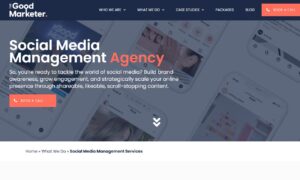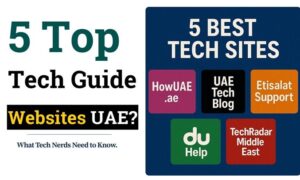Welcome to the era of digital connectivity, where the world lies at the click of a button! However, have you ever paused to contemplate the true accessibility of this expansive online realm? In our interconnected society today, it is imperative that we approach website design with inclusivity at the forefront. Every individual, irrespective of their background or abilities, deserves an equal opportunity for accessing and navigating the internet seamlessly. Join us on a journey to explore the art of creating inclusive websites platforms that welcome users from all walks of life and abilities. From visual impairments to cognitive variances, let’s embark on a quest to bridge the accessibility gap, ensuring that each person can confidently surf the web without constraints.
Introduction to Web Accessibility
Web accessibility embodies the principle of ensuring that websites do not pose barriers that hinder interaction or access for individuals with disabilities. When websites are designed, developed, and edited with precision, all users can enjoy equal access to information and functionality.
Exceptional web design is pivotal for maximizing user accessibility. The first step in crafting an accessible website is to prioritize accessibility right from the inception of your project. It is vital to infuse accessibility considerations at every phase of development – from conceptualization and design to coding and testing. By adhering to simple guiding principles, your website can be made accessible to a diverse range of users.
This section initiates an exploration of web accessibility, delineating essential concepts. Additionally, it provides references for further exploration on this topic.
Understanding Web Accessibility
Web accessibility entails the practice of designing websites that are navigable by people with disabilities. This encompasses individuals with visual, auditory, physical, speech, cognitive, and neurological impairments.
Web accessibility extends its benefits to individuals who may not have disabilities but could face temporary impairments, such as a broken arm or those using mobile devices with compact screens. It is also advantageous for those encountering challenges with mouse or keyboard usage. Furthermore, web accessibility supports the elderly population, whose ability to process information, sight, and hearing might decline with age.
Prioritizing the design of accessible websites is critical, as the internet progressively becomes an integral part of daily life. Many individuals with disabilities rely on the internet for education, employment, information, and entertainment. Websites that lack accessibility inadvertently exclude these users, curtailing their full participation in society.
Numerous approaches enhance website accessibility. Implementations such as adding alternative text to images for screen reader comprehension, designing universally accessible forms, simplifying navigation, and providing captioning or transcripts for videos contribute to a more inclusive online realm. Web accessibility benefits everyone, fostering a diverse and inclusive internet environment that transcends ability levels.
Significance of Web Accessibility
Web accessibility is paramount in guaranteeing universal access and usability of the internet. This encompasses individuals with disabilities who might have challenges using standard keyboards or mice. Moreover, web accessibility addresses the needs of older adults who might experience difficulty reading text on screens. Additionally, a web designed with accessibility in mind promotes inclusivity across diverse cultural and background dimensions. By democratizing web access, we can establish a more equitable and diverse internet space.
Furthermore, web accessibility yields economic advantages. Accessible websites can cater to a broader, more diverse audience, potentially driving higher sales and revenue. Lastly, incorporating web accessibility aligns with regulatory compliance, such as the Americans With Disabilities Act (ADA).
Advantages of Inclusive Website Design
An inclusive website design is one that accommodates the requirements of all users, including those with disabilities. By crafting websites accessible to everyone, we contribute to an internet space that is all-encompassing.
Key advantages of an inclusive website design include:
- Enhanced accessibility for all users, irrespective of disabilities
- Increased user engagement, as all users can access and navigate the website
- Improved user experience, as inclusive design addresses varied needs
- Enhanced Search Engine Optimization (SEO), with search engines favoring accessible websites
- Broader audience reach, as an inclusive website is usable by anyone, anywhere
- Professional credibility, as an inclusive design signifies strong web design practices
Enhancing Website Accessibility
There are multiple strategies to bolster website accessibility for all users. Consider the following recommendations:
- Employ clear and concise language.
- Prioritize intuitive website navigation.
- Utilize alt tags to describe images.
- Offer transcripts for audio and video content.
- Incorporate captions for videos.
- Provide text alternatives for documents.
Designing for Diverse User Profiles
When developing websites, it’s pivotal to recognize the diversity among users. Users possess various needs and abilities, necessitating an all-encompassing design approach.
One crucial yet often overlooked user category comprises individuals with disabilities. A staggering estimate of over 1 billion individuals globally grapple with some form of disability, underscoring the urgency of creating websites accessible to this demographic. Employing techniques like alternative text for images, transcripts for audio/video content, and clear language is vital.
Additionally, considering mobile device users is imperative. With the proliferation of internet access via phones and tablets, responsive design becomes crucial. This entails optimizing elements for touch navigation, legible fonts, and content suitable for diverse screen dimensions.
Ultimately, a comprehensive design ethos acknowledges diverse user profiles, ensuring inclusivity and optimal experiences for all.
Providing Alternatives for Non-Text Content
In the process of website design, ensuring alternatives for non-text content is paramount. This spans images, videos, audio, and diverse media forms.
Images necessitate alternative text (alt text) descriptions, enabling blind or visually impaired users to comprehend content. Videos should boast captions, facilitating enjoyment for users with hearing impairments. Additionally, providing transcripts ensures information accessibility for all.
Audio content should be transcribed or captioned, rendering it accessible. Media such as infographics and charts should be accompanied by relevant descriptions.
By offering alternatives for non-text content, websites can genuinely cater to all users.
Facilitating Seamless Navigation
Efficient website navigation hinges on a coherent, intuitive structure. This involves clear labeling of links, buttons, and elements. Crucially, layout simplicity and prominence of vital information are vital. The navigation system should be intuitive, ensuring users locate desired information effortlessly.
Inclusivity in design mandates clear instructions, jargon-free language, and compatibility with assistive technologies like screen readers.
Optimal Color Contrasts and Text Sizes
Selecting appropriate color contrasts and text sizes is pivotal. This guarantees legibility and comprehension across varying visual capacities.
When picking colors and text sizes, several considerations apply. High contrast between text and background is essential, typically involving dark text on a light background. Text should be adequately sized – around 16px for body text. Headings should stand out, adopting larger fonts and bold styling.
Adhering to these principles ensures a universally accessible website.
Incorporating Accessible Features
Inclusive website design necessitates the integration of features that cater to all users. Examples include:
- Alt text for images: Facilitating content comprehension for visually impaired users.
- Closed captioning for videos: Ensuring video content is accessible to individuals with hearing impairments.
- Transcripts for audio content: Providing a textual alternative for auditory information.
- Link descriptions: Aiding screen reader users in comprehending link destinations.
By incorporating these accessible features, websites extend usability to everyone.
Conclusion
The core principle underpinning inclusive website design is universal usability. This entails considering web accessibility to accommodate individuals with disabilities. It also necessitates responsive design for seamless experiences across devices. By embracing these principles, websites can foster inclusivity and usability for all.


































